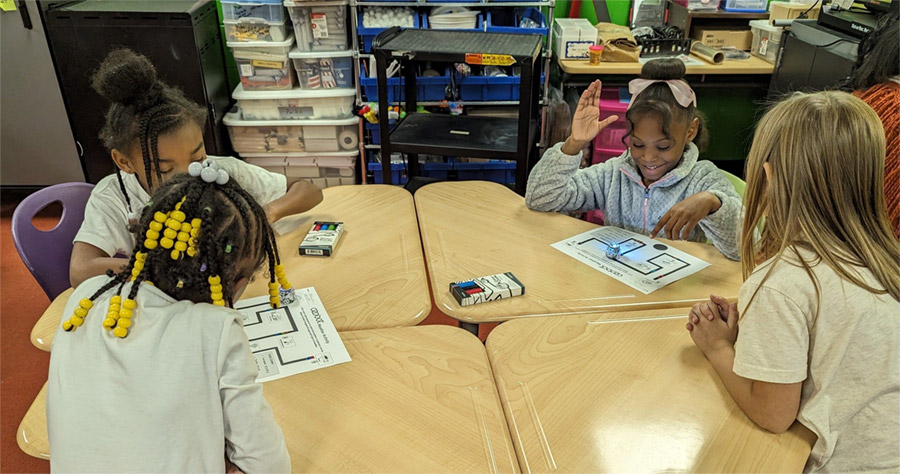NNPS CODES! launches during Computer Science Education Week
Posted: December 7, 2023
All Newport News Public Schools students spent time learning computer coding as the school division launched NNPS CODES! during Computer Science Education Week December 4-8.
Each student will participate in a minimum of one hour of coding activities this week, with optional material available to be integrated by teachers into planned lessons or existing curricula, according to Tami Byron, instructional supervisor for STEM.
A recommended 12-minute coding session each morning was suggested to allow students to complete a full hour of coding this week. Teachers received a slide deck to help them easily display the daily coding activities.
Additionally, teachers were encouraged to collaborate with their school's assigned instructional technology coach to incorporate computer science standards into their week's lesson plans.
Spanning all grade levels, coding activities have taken many forms.
On Monday at Hidenwood Elementary School and Tuesday at Jenkins Elementary School, 2nd graders participated in an Ozobot weather activity. The lesson introduces 2nd grade students to basic weather phenomena while incorporating Ozobots, which are small programmable robots, to enhance their learning experiences.
"Students coded an Ozobot by using specific color combinations and sequences to program and control the Ozobot's movement and behavior," said Elizabeth Orlando, instructional technology coach at Hidenwood and Jenkins elementary schools.
"Through color coding, students are introduced to the basic concepts of programming, understanding that different color sequences represent specific commands that guide the Ozobot to perform various actions."
On Wednesday, Erin Brown, instructional technology coach at Dutrow and Katherine Johnson elementary schools, visited 2nd graders in teacher Lisa Brooks' class at Dutrow for a coding lesson. Brown showed students how to use the Scratch animation program.
Choosing Animate a Name to illustrate how it works, Brown explained that for every fun game students like to play there is a coder designing the back end of the computer's functions. After watching Brown demonstrate on a big screen and then a brief tutorial, students each worked on a design on their own computers while testing out the available options for illustrations, sounds and text.
"They see the front end of things â?? the game play, the finished product," Brown said. "This gives them an opportunity to say someone actually created that. So that character that's running through this maze â?? someone had to code each step of that.
"It gives them an introduction to the fact that there is a back end and it empowers them as creators to say I can learn those things."
Using Scratch teaches students how to learn by playing and experimenting within the program, and that experiential learning is built upon throughout the various grade levels, Brown added.
"I see it as an open-ended learning tool to demonstrate their knowledge," Brown said.
On Friday, pre-kindergartners at Marshall Early Learning Center will participate in two activities from learn-to-code educational tool CodeSpark Academy â?? the sequencing activity Donut Detective and Sweet Sorter, which teaches Boolean Logic, a form of algebra that is centered around three simple words.
"In my role, I emphasize the significance of integrating computer science experiences for learners of all ages," said Karen Griffin, instructional technology coach at Marshall, as well as Denbigh and Watkins early childhood centers.
"For example, CodeSpark Academy's Sweet Sorter activity not only nurtures Boolean Logic skills, but also aligns with math standards, fostering students' abilities in sorting and classifying by attributes. This approach enriches the learning experience for students and can be fully connected to learning already happening in core subject areas."









